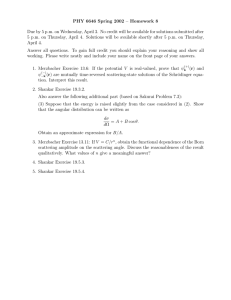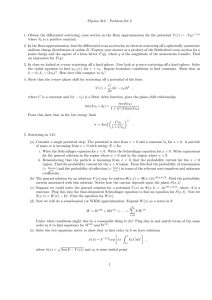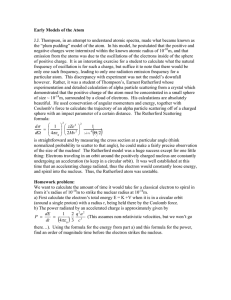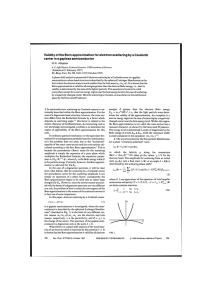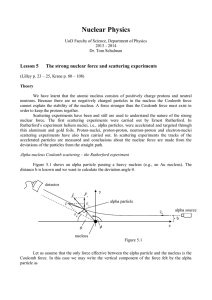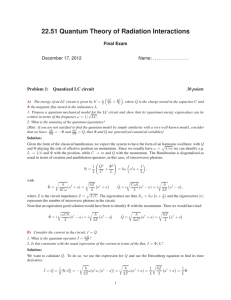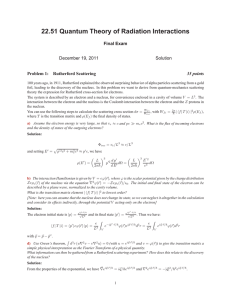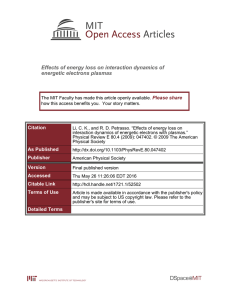Problem Set 9 PHY 465 - Spring 2014 Assigned: Thursday, Apr. 20
advertisement
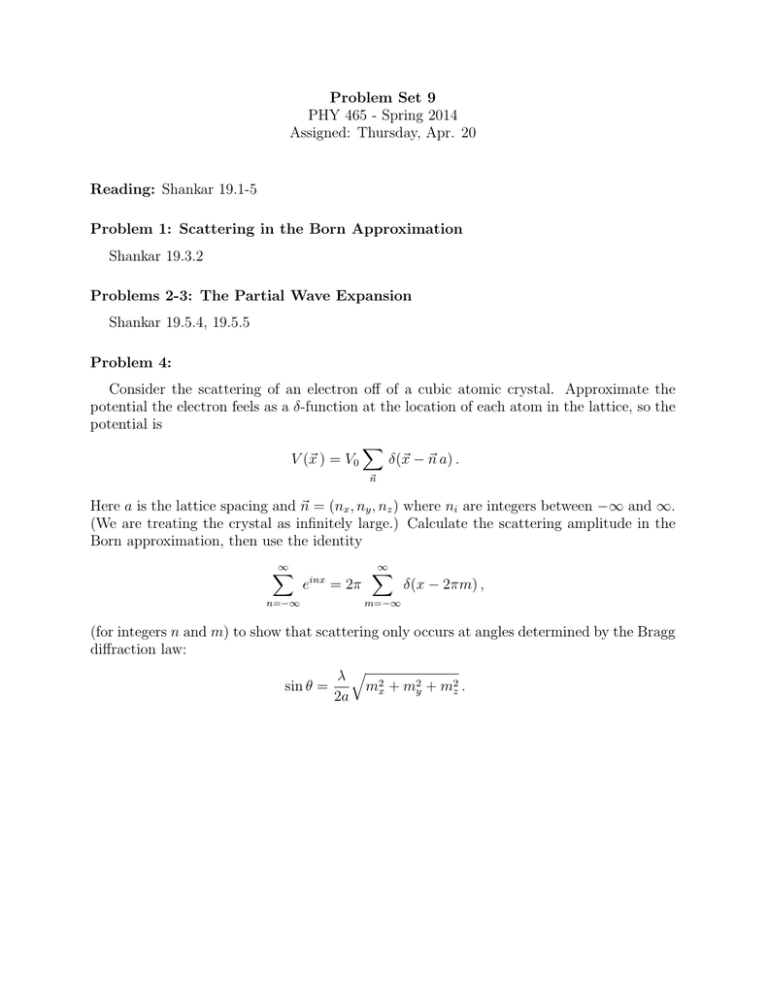
Problem Set 9 PHY 465 - Spring 2014 Assigned: Thursday, Apr. 20 Reading: Shankar 19.1-5 Problem 1: Scattering in the Born Approximation Shankar 19.3.2 Problems 2-3: The Partial Wave Expansion Shankar 19.5.4, 19.5.5 Problem 4: Consider the scattering of an electron off of a cubic atomic crystal. Approximate the potential the electron feels as a δ-function at the location of each atom in the lattice, so the potential is X V (~x ) = V0 δ(~x − ~n a) . ~ n Here a is the lattice spacing and ~n = (nx , ny , nz ) where ni are integers between −∞ and ∞. (We are treating the crystal as infinitely large.) Calculate the scattering amplitude in the Born approximation, then use the identity ∞ X n=−∞ inx e = 2π ∞ X δ(x − 2πm) , m=−∞ (for integers n and m) to show that scattering only occurs at angles determined by the Bragg diffraction law: λq 2 sin θ = mx + m2y + m2z . 2a Problem 5: In section 19.3 of the textbook, the Born approximation is used to calculate the differential cross section for an electron scattering from the Coulomb field of a nucleus of charge Z, assuming the nucleus is point-like. Generalize this result to an electron scattering off a nucleus which is not point-like but has an extended charge distribution, ρ(~x ). The electrostatic potential in this case is given by: Z ρ(~y ) V (~x ) = Ze d3 y |~x − ~y | R Here the total charge of the nucleus is Ze so the density ρ(~y ) is normalized as d3 yρ(~y ) = 1. a) Show that dσ dσ = × F (q) dΩ dΩ Coulomb where dσ/dΩ|Coulomb is the differential cross section in the point-like limit. The function F (q) is called the form factor; give the form factor as an integral over the function ρ(~x ). b) What F (q) in the limit q → 0? Explain your result on physical grounds. c) What is F (q) for a uniform spherical charge distribution of radius R?

